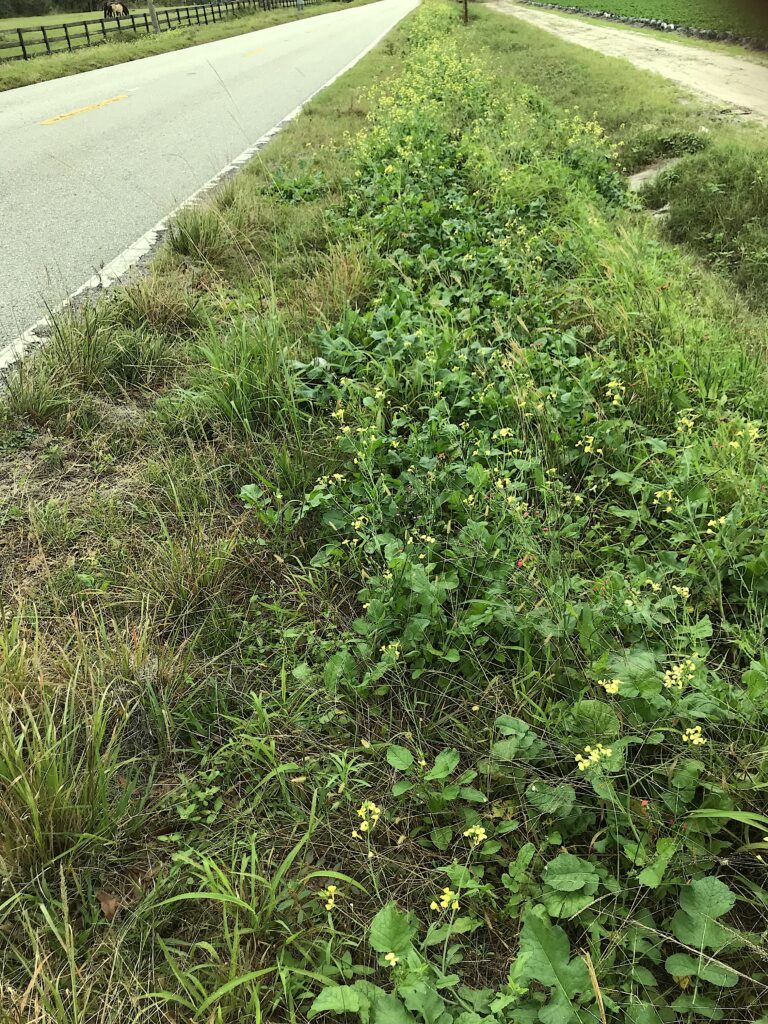
This is a common place to find mustard or radish plants this time of year, a streak of yellow blossoms beside the road. Whether you eat them depends on what kind of road it is et cetera. Photo By Green Deane
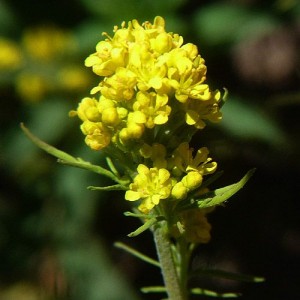
Mustard and radish blossoms clump.
Mustards like chilly weather, or at least locally they do. You can see Wild Mustards and Wild Radish not only along roadsides now but in various fields from farm land to ignored citrus groves. The two species are used interchangeably and look similar. However Wild Radishes tend to be serpentine rather than straight and tall like Wild Mustard. They also have lumpy seed pods, or, more lumpy than mustard seed pods. Usually you will find a stand of one or the other. I don’t recall finding both in the same patch. Blossom colors can range from yellow to white with streaks of purple. But the leaves always have the biggest lobe on the end farthest from the plant. Look for them in sunny areas with fertile soil. Not native they came from Eurasia in the 1700s. And note the seeds can remain viable in the soil for up to 60 years. To read more Wild Radish go here, and for Wild Mustard,here.
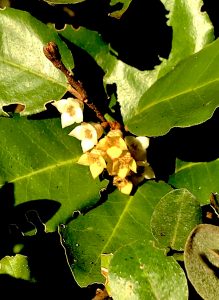
Silverthorn in blossoms in november and December. Photo by Green Deane
Last weekend I notice one fruiting species nearing the end of it’s season, and one blossoming to start its season. Still fruiting in our mild winter (thus far) is the Tallow plum. I found ripe yellow fruit and several green unripe one so unless the woodland creatures get them first we’ll have some for a few more weeks. And blossoming now — if you look very closely — is the Silverthorn. It has tiny boxy light green blossoms that will between now and February turn into bright red berries shaped like a skinny jelly bean. Tallow plum is a somewhat rare native whereas Silverthorn is an excaped ornamental from Asia and also sold commercially although it is banned in a few states.
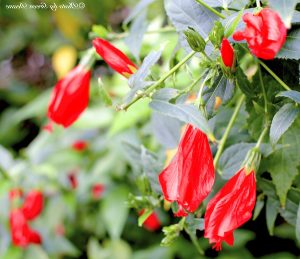
Malvaviscus pendiflorus. Photo by Green Deane
We saw several species blooming this past weekend in my foraging class. The Hibiscus were happy including the “Sleepy Hibiscus.” It’s a fairly easy shrub to identify because the bright red blossoms never unfurl. Also blossoming was the Bauhinia. It’s a tree that is both easy and challenging at the same time. Bauhinia blossoms are edible, look nice in salads. Some of the species have edible seeds and some do not. (They are in the pea family and most pea trees — most not all — do not have edible seeds.) Sorting out which Bauhinia you have can be a challenge, nearly as bad as sorting out which Cereus you have. Like the Cereus cactus there are several man-made hybrids and perhaps even some fake botanical names. It can make species identification a real headache though as far as I know all the blossoms are edible. Only “discovered” 111 years ago the blossom of the Bauhinia blakeana is the emblem of Hong Kong. You can read about the Bauhinia here.
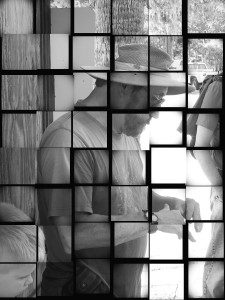
Foraging Classes are held rain or shine or cold.
Foraging classes: Spanning the state this weekend with a class on both coasts, Largo and Melbourne.
Saturday November 26th, Eagle Park Lake, 1800 Keene Road, Largo, FL 33771. Meet at the pavilion near the dog park. 9 a.m.
Sunday November 27th, Wickham Park: 2500 Parkway Drive, Melbourne, FL 32935-2335. Meet at the “dog park” inside the park. 9 a.m.
Saturday December 3rd Mead Garden: 1500 S. Denning Dr., Winter Park, FL 32789. Meet at the bathrooms. 9 a.m.
Sunday December 4th Bayshore Live Oak Park, Bayshore Drive. Port Charlotte. 9 a.m. Meet at bayshore and Ganyard Street.
For more information about the classes, to pre-pay, or to sign up go here. For all communication with me use GreenDeane@gmail.com
FRIDAY December 23rd: 12th Urban Crawl it is also time to mark your calendar for my 12th annual Urban Crawl. It will be Friday December 23rd at 10 a.m. in Winter Park, Florida. We meet in front of Panera’s. It’s difficult to believe I’ve had that walk for twelve years now. It is wheel chair friendly. The Urban Crawl is free to all.
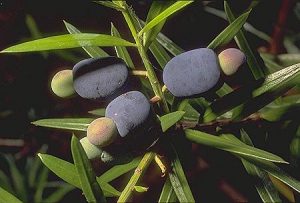
Podocarpus arils are edible. The seeds are not.
Actually there’s nothing wrong with the photo per se, it’s the time of year that’s different. Usually Podocaprus develop non-edible seeds with their edible aril around early August, give or take a week or two. That’s the seasonal mother load so to speak. But for several years I have noticed four Podocarpus trees fruiting near Christmas time. I have also spied one hedge doing the same not far away. As the weather varies year to year I can’t really say that is the cause. My next choice is different species. That might account for it. Thus while we usually harvest the arils in August we have a yuletide treat when I do my free Urban Crawl near these trees December 23rd. To read more about Podocarpus go here.
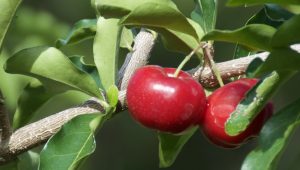
A local city has added an edible to their downtown park. Photo by Green Deane
Shall I craft an alliteration and say I saw an exciting sighting this week in Winter Park? A while ago in their downtown park they removed a Limequat leaving the space empty. I have no idea why the tree had to go in that it was regularly fruiting and while not rare a novelty. It has been replaced by a Acerola Cherry also called Barbados Cherry. This little tree’s claim to fame is a huge amount of acorbic acid which is natural vitamin C. Each fruit has several times your daily need for vitamin C. This tree has been fruiting and I noticed the fruit was not being picked up. This is a common sight. I routinely see fruit rotting on the ground. This includes mangos, star fruit, loquats, citrus, apples and now Acerola Cherries
Changing foraging videos: As my WordPress pages are being updated the video set will go away. They are the same videos I have on You Tube. Some people like to have a separate copy. The DVD format, however, is becoming outdated. Those 135 videos plus 36 more are now available on a USB drive. While the videos were played from the DVDs the videos on the USB have to be copied to your computer to play. They are MP4 files. The 171-video USB is $99. If you make a $99 “donation” using the link at the bottom of this page or here, that order form provides me with your address, the amount — $99 — tells me it is not a donation and is for the USB.
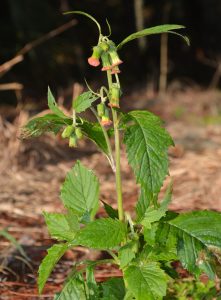
Redflowered Ragweed. Photo by Green Deane
Redlfower Ragweed isn’t a ragweed but I’ve been seeing it for a couple of years now. WE should see some in the Largo class. It reminds me of Fireweed/Burnweed except with red blossoms. Botanically it’s Crassocephalum crepidioides (kras-oh-SEF-uh-lum krep-pid-dee-OY-deez.) Crassocephalum is from the Dead Latin “Crassus” meaning “thick” and “kephale” which is Greek for head. Crepidioides is more mangle Greek. “-oides” in Dead Latin is mispronounced borrowed Greek and means “resembles.” Crepidioides means “resembles Crepis.” Crepis is from an old Greek word for a frilly funeral veil. It works its way into English via French as “crepe” paper. So “thick head resembles crepe paper” is one way to interpret the plant’s name.” And… even though it is called the Redflower Ragweed its leaves more resemble Fireweed/Burnweed, Erechtites hieraciifolius (which is an even more complicated, naughty story.) Redflower Rageweed’s blossoms, however, more resemble the toxic Florida Tassel Flower. Cornucopia II says of Crassocephalum crepidioides on page 37: “Ebolo, Okinawan Spinach, Young leaves and shoots are used as a potherb, fried, or mixed in Khao yam. The leaves are fleshy, tinged with purple and have a somewhat mucilaginous quality and nutty flavor. Has become quite popular on the island of Okinawa and in Hawaii In Thailand, the roots are eaten with chili sauce or cooked in fish curry. Tropical Africa. Cultivated.”
This is weekly newsletter #532. If you want to subscribe to this free newsletter you can find the sign-up form in the menu at the top of the page.
To donate to the Green Deane Newsletter click here.

